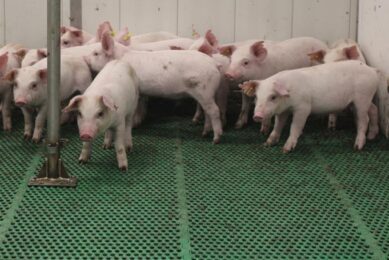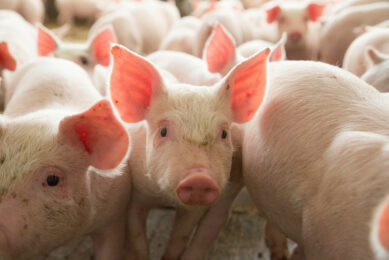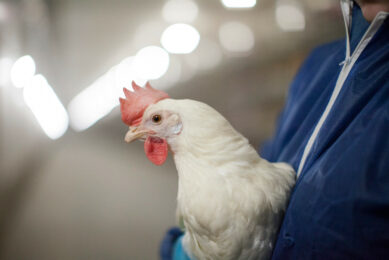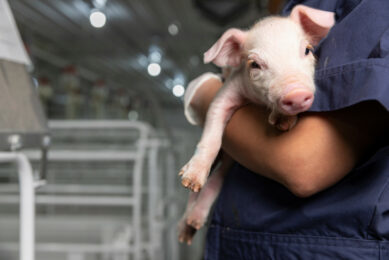A key strategy for pathogen control and food safety
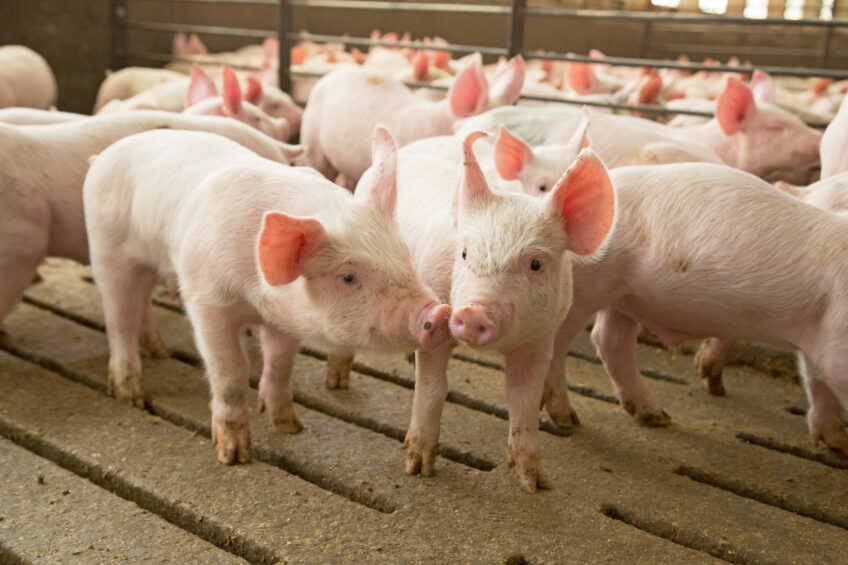
The pig’s gastrointestinal tract (GIT) is the first line of defence against foodborne pathogens. When this barrier is compromised, pathogens can colonise the gut and then proliferate, increasing the risk of contamination at the abattoir. As Salmonella remains a leading cause of foodborne illness globally, reinforcing the gut barrier in pigs is not only essential for animal health, but also a crucial step in protecting public health and food safety.
The GIT of pigs is far more than just a site for nutrient absorption – it is a critical immune organ and a physical barrier. Comprising epithelial cells, tight junctions, mucus layers and immune-signalling pathways, the gut barrier is designed to prevent pathogenic organisms from entering the bloodstream and causing harm to the host animal. However, when this barrier is compromised, pathogens such as Salmonella can adhere to and invade intestinal cells, triggering inflammation and enabling systemic infection within the pig.
The gut environment is also tightly linked to the resident microbial population. A balanced microbiota supports digestive function, modulates immune responses, and offers colonisation resistance to pathogenic bacteria. When this microbial balance is disrupted, it creates a window of opportunity for harmful pathogens to colonise the gut and outcompete beneficial bacteria. Ultimately, this will compromise both pig health and food safety.
The food safety connection
As mentioned, Salmonella is a leading cause of foodborne illness in humans globally. While poultry is often the top offender, pork meat and its derived products have become one of the most significant sources of infection, since pork is now one of the most consumed and traded meat products worldwide. Despite vast improvements in on-farm hygiene and biosecurity practices, strict abattoir monitoring and controls, and traceability systems, Salmonella contamination continues to pose a significant risk to human health. Recent reports from the European Food Safety Authority (EFSA) and the Centers for Disease Control and Prevention (CDC) indicate that S. enterica Enteritidis and S. enterica Typhimurium are among the most common serovars found in pork products. These serovars, and others like them, can cause illness in humans.
Controlling these pathogens at the source (within the pig’s GIT) is a fundamental step in mitigating Salmonella from entering the food chain. To achieve this, nutritional technologies that help to reinforce the integrity of the gut barrier and inhibit bacterial attachment and proliferation have emerged as viable and effective on-farm strategies for pig producers.

Insights from newly-published research
A newly published peer-reviewed paper from the Alltech research department offers a fresh insight into how dietary prebiotics can influence pathogen control in pigs. The research assessed the effects of several commercial yeast cell wall products from Saccharomyces cerevisiae, including a mannan-rich fraction (MRF) from Alltech, on the attachment of harmful foodborne strains of Salmonella to an intestinal porcine enterocyte cell line (IPEC-J2). Among the commercial products tested, the attachment of three serovars (S. enterica Enteritidis, S. enterica Heidelberg, and S. enterica Typhimurium) to IPEC-J2 cells was consistently inhibited with the addition of MRF.
The reduced attachment of the three Salmonella species serovars to IPEC-J2 cells in the presence of MRF coincided with a measurable decrease in the expression of several inflammatory markers. This study suggests that MRF not only limits the proliferation of foodborne strains of Salmonella species found in pig intestinal cells but may also help to mitigate the inflammatory responses typically associated with infection.
The results of this peer-reviewed publication support the use of MRF technologies in pig diets to fortify the gut barrier and reduce the pathogen load at the intestinal level — a vital intervention to reduce systemic infection and subsequent risk of contamination during slaughter and processing.
Nutritional strategies are key
In European pig production systems, where the use of pharmacological levels of zinc oxide is now banned and antibiotic usage is increasingly restricted, nutritional strategies have become central to maintaining gut health and controlling pathogens. This shift has driven a more proactive approach, with particular attention on dietary interventions that reinforce the gut barrier.
Prebiotics such as MRF, derived from the yeast cell wall of Saccharomyces cerevisiae, offer a targeted mechanism to reduce pathogen colonisation. MRF can act as decoy molecules in the gut, mimicking epithelial binding sites. This allows harmful bacteria like Salmonella species to bind to the MRF rather than to the intestinal lining, allowing them to be flushed out from the gut before they can establish infection.
Alltech has spent more than 20 years researching animal gut health and developing novel technologies aimed at enhancing gut health and development. One such gut health solution developed by Alltech is a proprietary MRF technology designed to support gut health by limiting the attachment and colonisation of enteric pathogens. Backed by more than two decades of research, and validated in multiple peer-reviewed studies and commercial trials, this MRF technology has become a trusted tool for producers seeking to reduce reliance on antibiotics while supporting gut health and development and animal performance. When incorporated as part of a comprehensive gut health and nutrition strategy, alongside strong biosecurity and on-farm management, Alltech’s MRF solution can play a valuable role in reducing pathogen pressure on-farm by contributing to a more stable and established gut environment and, ultimately, a safer food supply chain.
Integrated approach
Adequate pathogen control requires pig producers to adopt an integrated approach that incorporates optimal nutrition, health, and management practices, with the overarching aim of improving gut barrier function. As research continues to highlight the role of specific nutritional components, such as MRF technologies, pig producers now have science-backed tools to reduce pathogen colonisation and mitigate the risks of contamination within their herds. When incorporated as part of a broader gut health strategy, gut health technologies such as the MRF technology from Alltech can help to support the gut health and development of pigs, making them less susceptible to the prevalence and impact of zoonotic pathogens like Salmonella and, ultimately, helping to ensure safer pork products for consumers.
References available upon request.



